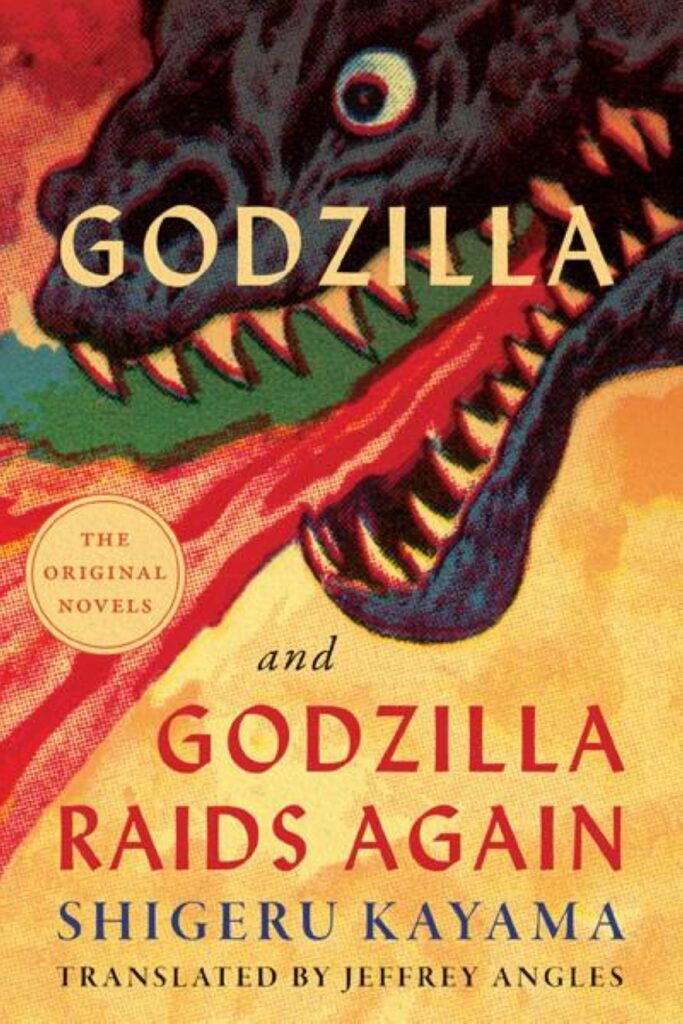Tokyo, 30 October, /AJMEDIA/
Sixty-nine years after Godzilla first rose from the depths of the ocean, fueled by rage at humanity and radioactivity from a nuclear test gone awry, he rises again. Not only will the monster storm into cinemas on Nov. 3 with the release of “Godzilla Minus One,” but this month brought the English translation of two novellas for the legions of Godzilla fans across the globe to enjoy.
With “Godzilla and Godzilla Raids Again” by Shigeru Kayama, devotees can finally read in English the two stories that together fully articulate the intentions behind the creation of Japan’s most infamous kaijū (monster). The novellas were published in 1955 in Japan, a year after the premiere of the original “Godzilla” film.
Kayama (1904-75) was a popular speculative fiction writer tasked with penning the original treatments for the first two “Godzilla” movies. He was recruited by producer Tomoyuki Tanaka to create an allegory for the dangers of nuclear testing and weaponry.
“Although lots of people at Toho Studios contributed to the first ‘Godzilla’ movie, Kayama was the one who developed Tanaka’s vague idea for a film into more or less what we know today,” says “Godzilla and Godzilla Raids Again” translator Jeffrey Angles. “He deserves to be better known as the ‘real father’ of Godzilla.”
Kayama’s treatment, however, contained a scathing indictment of the entire nuclear industry — and the United States in particular. The two films softened many of Kayama’s criticisms, and he therefore published his novellas to expand on the major themes of the film. “Through translating these novellas,” Angles says, “I wanted to show the English-speaking world what Kayama really hoped to convey.”
With an informative afterword by Angles, “Godzilla and Godzilla Raids Again” finally allows English readers to better understand the important context behind the monster. Godzilla as a fictional creation was inspired by the real-life tragedy of the Lucky Dragon No. 5, a Japanese fishing boat that was caught near the detonation of a U.S. thermonuclear weapon test at the chain of islands known as Bikini Atoll on March 1, 1954. All 23 crew members were rushed to the hospital with radiation sickness, and one died soon afterward. Widely reported in Japan, the event was largely ignored by Western media. Kayama’s novellas make the historical inspiration for the monster obvious, starting one story with Godzilla’s attack on a small fishing boat and playing on Japan’s already considerable fears of the dangers of radioactive fallout amid the rampant arms race developing around the world.
Angles, a professor of Japanese culture and literature at Western Michigan University and best known for his sensitive translations of modern feminist Japanese poetry, renders Kayama’s spare prose and action-packed sequences beautifully. The author’s plotting underlies the important political message at the heart of “Godzilla” that is easy to lose in film: The monster victimizes others because he is a victim himself. Or, simply put, nuclear technologies create monsters we cannot control.
Kayama also used the novellas to criticize the accepted idea of an arms race, that the only way to deter nuclear weaponry was to build more. The second novella, “Godzilla Raids Again,” set in Osaka, further shows Godzilla’s destructive rage as a reaction to his own painful transformation under the effects of nuclear weaponry. Culturally, these two novellas expand the underlying pacifist beliefs of the entire “Godzilla” franchise and are an important contextual addition sure to appeal far beyond the kaijū fan base.
Overall, the novellas (which are aimed at middle-school readers) are entertaining and informative, even for those unfamiliar with the original films, although the stories sometimes falter with obvious characterizations or on-the-nose messaging. For film fans, it’s an exciting opportunity to revisit and expand on the monster’s origins before Toho Studios releases the newest chapter in the “Godzilla” saga.
The franchise’s popularity has endured for decades; it spans 38 films (five American and 33 Japanese), several television adaptations (with a new one in production) and countless spin-offs. With the addition of “Godzilla and Godzilla Raids Again,” we see the genesis of a monster that was always intended to hold up a mirror to humanity’s own monstrous choices.

